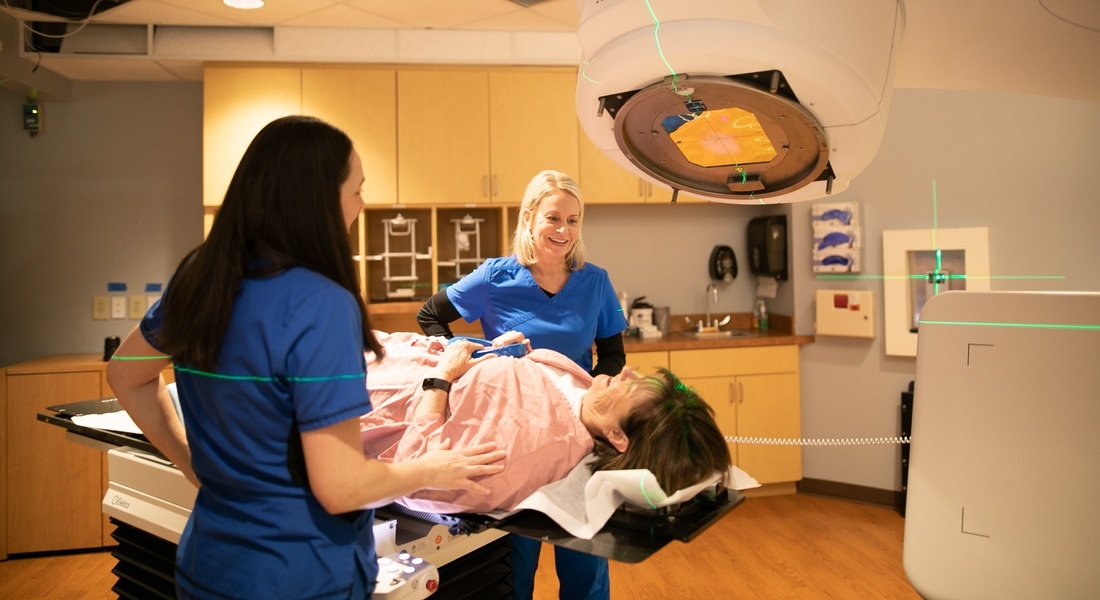
Treating skin cancer can be approached in several different ways. Your oncologist will work with you to find the best combination given the stage and considering your overall health.
When it comes to nonmelanoma skin cancers, sometimes a biopsy is all it takes to remove it. If this is the case, no further treatment is needed. If you do need more treatment, your doctor will describe your options, which often include:
For melanoma, one of these five treatments may be used:
The recommended treatments for both nonmelanoma skin cancers and melanoma might be used alone or in combination.
Surgery is the primary treatment for melanoma, with possible follow up with other types of therapy. Nonmelanoma skin cancers are also often removed with surgery and may include other types of therapy depending on whether it was a basal cell or squamous cell skin cancer.
Surgery to treat skin cancer may be done in one of several ways. The method your oncologist recommends depends on the size and place of the growth and other factors.
Your oncologist can further describe these types of surgery:
Chemotherapy is the use of drugs to stop the growth of cancer cells, either by killing the cells or by stopping the cells from dividing. There are a few different ways chemotherapy can be used to treat skin cancer:
The way the chemotherapy is given depends on the type and stage of the cancer being treated.
Even if all the melanoma is removed during surgery, there can be some left that can't be seen. In cases such as this, chemotherapy might be given after surgery to lower the risk that the cancer will come back. This is called adjuvant therapy.
Photodynamic therapy (PDT) is a two-stage treatment that combines light energy with a chemical, called a photosensitizing agent, to kill cancer cells. Photodynamic therapy is used to treat cancer on or very near the surface of the skin. This is often done topically with a cream or with an injection.
The side effects of PDT are usually not serious. PDT may cause burning or stinging pain. It also may cause burns, swelling, or redness. It may scar healthy tissue near the growth. If you have PDT, you will need to avoid direct sunlight and bright indoor light for at least 6 weeks after your skin cancer treatment.
Radiation therapy (also called radiotherapy) is a cancer treatment that uses high-energy x-rays or other types of radiation to kill cancer cells or keep them from growing.
Although not a common treatment for skin cancer, radiation therapy may be used for skin cancer in areas where surgery could be difficult or leave a bad scar. You may have this treatment if you have a growth on your eyelid, ear, or nose. It also may be used if the cancer comes back after surgery to remove it.
External beam radiation, which is radiation given from a machine outside the body, is the most common radiation therapy used to treat skin cancer. Delivering radiation in this way only affects cells in the treated area. This treatment regimen consists of a specific number of treatments given over a set period of time until the cancer is eliminated.
At RCOG, we typically use intensity modulated radiation therapy (IMRT) — an advanced form of external beam radiation treatment. IMRT allows precise targeting of tumor cells with high-energy beams of radiation that can be adjusted to different levels of intensity. This helps the radiation oncologist deliver a higher dose to the targeted area while limiting damage to surrounding healthy tissue.
Superficial radiotherapy (SRT) is a type of external radiotherapy. It treats cancer on or close to the skin surface. Superficial radiotherapy means that the radiation doesn't travel far into your body. SRT uses a precise dose of external radiation to destroy the cancer cells. The radiation only goes skin-deep, limiting risk to healthy internal tissues.
A less common type of radiation treatment for skin cancer is internal radiation therapy, more commonly called brachytherapy. This involves placing the radiation source very close to or inside of the skin cancer.
The side effects of radiation therapy could include rash, skin infection, itchy or inflamed skin, or a change in the color of the skin. However, your doctor can prescribe something to help provide relief.
Immunotherapy is a type of biologic therapy that uses the patient's immune system to fight cancer. Substances made by the body or made in a laboratory are used to boost, direct, or restore the body's natural defenses against cancer.
Interferon and interleukin-2 (IL-2) are types of biologic therapy used to treat melanoma. Interferon affects the division of cancer cells and can slow tumor growth. IL-2 boosts the growth and activity of many immune cells, especially lymphocytes (a type of white blood cell). Lymphocytes can attack and kill cancer cells.
Tumor necrosis factor (TNF) therapy is a type of biologic therapy used with other treatments for melanoma. TNF is a protein made by white blood cells in response to an antigen or infection. Tumor necrosis factor can be made in the laboratory and used as a treatment to kill cancer cells.
Targeted therapy is a type of treatment that uses drugs or other substances to identify and attack specific cancer cells without harming normal cells. The following types of targeted therapy are being used in the treatment of melanoma:
Quickly and efficiently build the materials you need to support your inbound marketing strategy. Drag and drop building blocks including testimonials, forms, calls-to-action, and more.